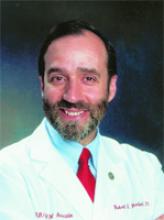We work an incredible number of hours per week. Long shifts and many nights on call characterize our work life to the point that the tireless obstetrician on night duty has become a cultural stereotype. In this case, the stereotype is based on truth. In some practices, weekend “power-call” runs from Friday morning until Monday morning, followed by Monday office hours, for a total of up to 84 hours on duty in 4 days.
The American Medical Association reports that ObGyns work an average of 61 hours per week, which is at the top of the range of hours worked per week, by specialty. Pathologists, dermatologists, and emergency medicine physicians, the AMA reports, work 45.5, 45.5, and 46 hours, respectively. The specialties with fewer work hours tend to have less demanding call schedules and daytime “banker’s hours.”
If ObGyns work 15 hours more per week than emergency physicians, then over the course of a standard 47-week work year, we’re on the job an additional 705 hours more than an emergency physician. Over a 35-year career, that extra 15 hours per week totals 25,000 hours—the equivalent of more than 11 years of a 46-hours-per-week schedule.
It’s always a long week for an obstetrician
| AMA survey: Work hours per week, by specialty | |
|---|---|
| Obstetrics and Gynecology | 61 |
| Anesthesiology | 61 |
| Urology | 60.5 |
| General Surgery | 60 |
| Diagnostic Radiology | 58 |
| Orthopedic Surgery | 58 |
| General Internal Medicine | 57 |
| Neurology | 55.5 |
| Pediatrics | 54 |
| Otolaryngology | 53.5 |
| Family Medicine | 52.5 |
| Psychiatry | 48 |
| Emergency Medicine | 46 |
| Dermatology | 45.5 |
| Pathology | 45.5 |
This historical pattern appears to conflict with the values of many contemporary US medical students. Recent data indicate that our medical students are using “life-style” variables to select their specialty, and are increasingly selecting careers with controllable work schedules, limited hours, and minimal night duty. In a study of specialty preferences from 1996 to 2002, controllable professional lifestyle appeared to account for most of the change in student career choices.1
These changing trends suggest that we are at a historical point in the evolution of the specialty.
Among our options are to continue our exceptionally intense work pattern or adapt to the values of the generations that will follow. If we continue the current pattern, fewer students will likely select obstetrics-gynecology as a career. Consequently we will begin to characterize ourselves as “The few. The proud. The OBs.”
Alternatively, we can adapt to the desires of the next generation and re-engineer our work to accommodate shorter shifts and fewer on-call hours. Necessarily, these adaptations will require us to work in larger coverage groups. This will decrease, to some degree, the continuity of care for our obstetrical patients.
However, if we are to compete effectively with other specialties, this change may be necessary.
A caveat: These data were derived from the AMA’s annual publication, Physician Socioeconomic Statistics, reported in 1999 and 2001, which is a survey estimate and does not represent a scientific and objective “time and motion” study.1


